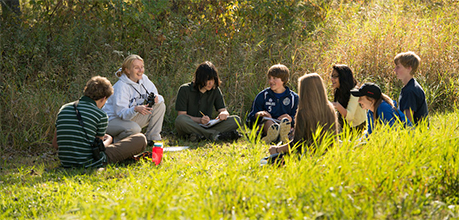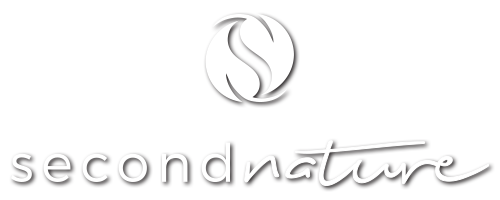Over the last six years Second Nature has been conducting research to assess treatment outcomes of our adolescent clients. In addition to our own research projects, Second Nature is involved in research with the University of New Hampshire and two industry associations (OBHIC and NATSAP) that are also exploring and tracking the effectiveness of outdoor therapy programs. Our current results offer objective evidence that Second Nature is highly successful at effecting positive change in measures relating to behavioral concerns, substance use, depressive symptoms, and a variety of other issues. Upon entering Second Nature, adolescents complete a questionnaire which measures their level of functioning to be similar to patients in other residential treatment centers. Consistently at graduation we find that students self-report fewer emotional struggles, increased hopefulness, and more success in their relationships. Participants in these studies also demonstrated significant improvement in overall motivation, life skills, interpersonal relationships, hope, self-confidence, and emotion control. Our follow-up research with clients suggests that six months after graduation they are maintaining the growth they made at Second Nature. This indicates that clients generalize the skills they learned at Second Nature
At Second Nature we measure change using a series of standardized and validated measures. The main questionnaire we use is the Youth Outcome Questionnaire® (YOQ). It is designed to measure change over time in regards to behavioral difficulties, depression, anxiety, interpersonal relations, and other psychological difficulties. We used several other instruments to measure hope, life effectiveness, treatment expectancies, and other factors. Parents and students were invited to complete questionnaires over the course of the program and at 6 and 18 months after graduation. The YOQ defines "reliable change" as a drop of 13 points on the parent's assessment and a drop of 18 points on the student's self-assessment. Reliable change means that there is a meaningful and noticeable difference in the client.

As seen on this graph, on average parent scores improved by a total of 67 points and student scores improved by 40 points, greatly exceeding what is needed to show reliable change. In addition to making significant improvements, students went from functioning at a "clinical" or "abnormal" level at intake to being well within a "community" range of functioning upon graduation.
Adolescents Improve in Several Other Important Factors
While at Second Nature students completed measures assessing hope, life effectiveness, treatment expectancy, and alliance with their therapist - each of which showed statistically significant improvements over the course of treatment. This suggests that these students now see themselves as more effective at fulfilling their desires in their personal lives and school as they have more self-confidence, emotional control, hope, and initiative. It also indicates a growing belief by the students that the treatment they are receiving will be helpful to them.
6 And 18 Months After Graduation Clients Maintain Their Progress
At our 6 and 18-month follow-ups, clients retained the practical and noticeable differences they achieved at Second Nature. Post-graduation scores indicated that on average, while there was some increase in symptoms following treatment, these were not clinically significant, and on average, clients remained in the normal range of functioning at six and 18 months post-discharge. This suggests that clients are able to generalize skills learned at Second Nature and maintain progress.
Second Nature is committed to continue evaluating the long-term outcomes. In the summer of 2014, we embarked on an unprecedented three-year follow-up.
Additional Evidence
Additional Evidence on Outdoor Behavioral Healthcare
Over the last twenty years research in nature-based therapy (often referred to as Outdoor Behavioral Healthcare, or OBH) has grown considerably. A number of programs and institutions have contributed to this promising research base. Below you will find information on some of the most significant areas of research, including outcomes and safety, as well as information on those who have supported and led such projects.
The OBH Council and the Research Cooperative
Since its formation in 1997, the Outdoor Behavioral Healthcare Council (OBHC) has been a driving force for research and evaluation.
In 1999 the OBH Council sponsored the creation of the Outdoor Behavioral Healthcare Research Cooperative (OBHRC). The purpose of OBHRC is to carry out comprehensive independent research and to provide credible, objective information to the field. Much of the research described below is a result of their work. Click to read more about OBHRC’s mission.
Safety of participants in OBH Programs
Public perception of outdoor behavioral healthcare programs often misconstrues “wilderness therapy” as potentially dangerous and unsafe. This perception can often be linked to a lack of knowledge regarding this innovative method of treatment, unfamiliarity with the extensive risk management techniques used in such programs, the inappropriate practices of less developed yet seemingly similar programs, and the vulnerable and problematic states of many of its clients.
While no treatment can guarantee the total safety of any child, adolescents participating in OBHC programs are actually at less risk than adolescents not participating in these programs (Gass, Gillis, & Russell, 2012). In 2012, the average American adolescent was two times more likely to visit an emergency room than participants in OBH programs. OBH Council program injury rates are substantially lower than many common activities teens participate in. Most notably, injuries during high school football games are over 328 times more common than injuries experienced in OBH Council outdoor therapy programs. For a more similar comparison, teen backpacking is 20 times more likely to produce an injury than comparable activities in an OBH Council program.
From OBH is Safer than Being at Home for the Average Teen and OBHRC Risk Management
Outcomes in Outdoor Behavioral Healthcare
The research supports that OBH is effective at improving overall functioning of youth. The first major outcome study in OBH analyzed parent and youth YOQ assessments from 858 participants from seven different OBH programs. This foundational study showed that clinically and statistically significant improvements were made during treatment, and that clients maintained these positive results one year after discharge. The researchers interviewed a randomized selection of these participants two years after leaving their OBH program; 83% reported to be doing better, 58% said they were doing well or very well, and 81% rated outdoor behavioral healthcare treatment as effective.

